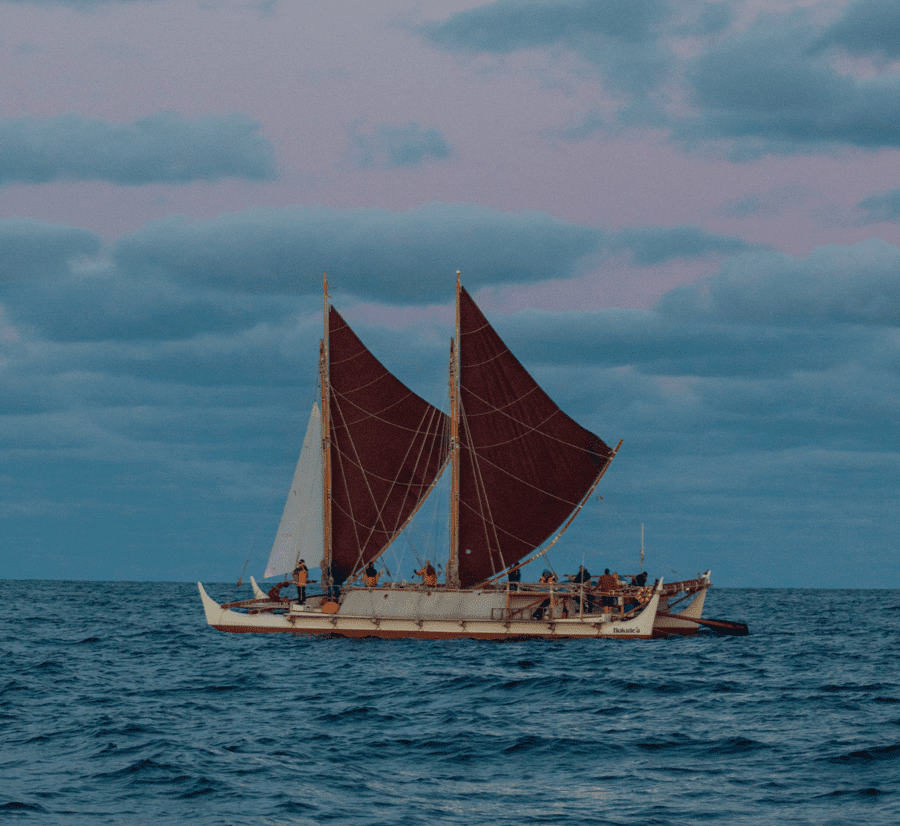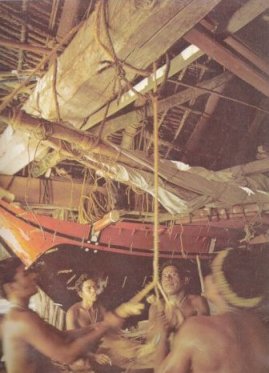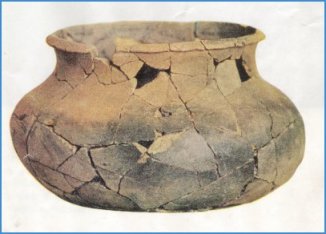Polynesian Voyaging - Tracing Pacific Migrations
Explore the epic saga of Polynesian voyaging across the vast Pacific, tracing migrations, cultural exchanges, and the remarkable feats of early seafarers. Follow the journey from the origins in New Guinea to the settlement of remote islands like Easter Island, revealing the legacy of Polynesian voyaging and the resilience of ancient maritime traditions.
Author:Jane RestureFeb 22, 202438.1K Shares828.6K Views

Human occupation of Oceania- those vast reaches of the Pacific encompassing Polynesia, Melanesia, and Micronesia- began on New Guinea (Papua and Papua New Guinea). It is on New Guinea that archaeologists have dug primitive stone tools and charcoal more than 25,000 years old from camp sites used during the last Ice Age, when sea levels were lower and the distances between Australia, New Guinea and the other Indonesian islands were much less.
Arrival Of Indonesian Mariners
When melting ice raised the level of the ocean and increased distances between land falls, New Guinea and its dark-skinned inhabitants - Melanesians - became more isolated until the coming of the brown-skinned people - out of island Asia - Indonesia, the Philippines and Taiwan.
Polynesian Voyaging - Ancestors' Migration
In their outrigger and double canoes with sails of plaited leaves, the latter reached New Guinea and nearby islands about 4,500 years ago, but did not dislodge the Melanesians they found already living there.
The Lapita Trail And Maritime Routes
Among the seafarers who moved eastward in small groups by various routes, were ancestors of the Polynesians. Using Fiji as a staging area, some eventually sailed on to uninhabited Tongaand Samoa.
Cultural Development In Polynesia
To have developed the physical types, language, and culture that the Polynesians share in common, these Polynesian forebears must have been isolated for a time in a home group of islands. A chain of archaeological discoveries leads us to believe that this isolation started in the islands of Tonga and Samoa roughly 3,000 years ago.
Lapita Pottery And The Spread Of Polynesian Influence
Beginning in 1909 in New Britain, archaeologists have found a type of pre-historic decorated pottery at various Melanesian sites. In 1947, samples were also excavated in Fiji, Melanesia's easternmost extension. Five years later the same pottery was uncovered at Lapita in New Caledonia. Now called Lapita-style pottery, these artefacts clearly trace the visits and attempted settlements of a maritime people moving along a Melanesian route towards Polynesia.
Lapita pottery was excavated in Tonga in 1963-64, and has recently been found in Samoa as well - both in western Polynesia. Tonga is the longest-inhabited island group in Polynesia, with radiocarbon dates as early as 1140 B.C.
Thus we conclude that Tonga's first settlers, the people who made Lapita ware, were the first true Polynesians.
Language ties indicate that this migration continued via Samoa eastward to the Marquesas, where the oldest sites in Eastern Polynesia have been found.
Expansion To Easter Island And Beyond
Far to the southeast of the Marquesas lies evidence of a truly remarkable feat - a voyage to Easter Island, some 2,400 miles away, in the face of prevailing winds and currents. Polynesia's easternmost outpost, Easter Island, is not only the most isolated inhabited island in the Pacific, but it is only 15 miles long.
Assessing its chances of being discovered by early Polynesians, we can conclude only that their sailing canoes were already capable of traversing the breadth of the Pacific, and that on one such voyage, Easter Island was fortuitously sighted. Radiocarbon dating in 1955-56 indicates its discovery and settlement as early as A.D. 400.
Although separated by nearly 3000 miles of ocean, a stone image from NeckerIsland in the Hawaiian archipelago (above) shares the same smile as its counterpart in the Marquesas (left). Archaeologists conjecture that artisans of similar cultures carved the statues, and thus assume one of the voyaging links between the Marquesas and Hawaii.
The sites on Easter Island show clear evidence when considered in conjunction with the archaeology and languages of the Society and Marquesas Islands indicate strongly that the pre-historic culture of Easter Island could have evolved from a single landing of Polynesians from a Marquesan island, fully equipped to colonise an uninhabited volcanic island.
Their success in making this windswept sixty-four square miles, without an edible native plant, not only habitable but also the seat of remarkable cultural achievements, is testimony to the genius of these Polynesian settlers.
A study of excavated adzes, fish hooks, ornaments and other artefacts indicates that Tahitiand the other Society Islands must have been settled soon after the Marquesas. Present information indicates that Hawaii and New Zealand were settled after A.D. 500.
Radiocarbon techniques permit us to assign tentative dates to this entire Pacific migration: entry into West Polynesia about 1000 B.C., reaching East Polynesia about the time of Christ completing the occupation by A.D. 1000.
Having reached the Pacific's farthest outpost, the early Polynesians possessed the skills to return. It is doubtful that one way voyages could account for the early presence in the Hawaiian islands, for example, of twenty odd cultivated plants of Tahiti and the Marquesas. Thus we conclude that the early Hawaiians repeatedly negotiated the longest sea route in Polynesia returning to Tahiti and then again to Hawaii, known as "child of Tahiti".
The formation of the Polynesian Voyaging Society and the construction of a 60 foot Polynesian double canoe re-enacted these voyages and served in many ways to recapture the unique knowledge, skills, and spirit of the Polynesian seafaring pioneers.
It has been over a millennium since the Polynesians sailed their open canoe across the Pacific, using stars, signposts of the sea, and the strange, perilous liquid paths of currents to move from one island to the next. Most were fifty-five to sixty foot V-sectioned craft, built of wide planks lashed to the frames with sennit and caulked with breadfruit sap. Hoisting their mat sails, they could cover one hundred to a hundred and fifty miles a day in open sea conditions. In Polynesia, the double canoe was the preferred style; in Micronesia, the single outrigger. Both were constructed with adzes of basalt or clamshell, drills fashioned from shark's teeth or shell.
In these vessels the Pacific Islanders made their great voyages of discovery and colonisation. They date from the advent of the New Stone Age, when newly developed heavy woodworking tools made it possible to adze planks and join them to the frames of boats, just as bark or skin had been sewn in earlier times.
The swift and capacious vessels of the Lapita navigators were probably little changed by Captain Cook's day. In 1779, Cook recorded canoes much faster than his Endeavour.
With Polynesian ability to preserve food for long period, a range of 5,000 miles in winds that were not too unfavourable would have been possible for these great canoes - ample for exploratory probes eastwards.
The Polynesians generally sailed into the wind by tacking, coming about and changing the side of the sail presented to the wind, as modern sailors do. The Micronesians (and the Polynesians of the Tuamotusand some western island groups) changed the course by shifting the sail from end of the canoe to the other, with the same side always to the wind.
Thus the vessels were "double ended", with bow and stern having the same design. Both outriggers and the method of tacking by changing ends seem to have originated in Indonesia.

Jane Resture
Author
Since she embarked on her first world trip in 2002, Jane Resture spent the past decades sharing her personal journey and travel tips with people around the world. She has traveled to over 80 countries and territories, where she experienced other cultures, wildlife she had only read about in books, new foods, new people, and new amazing experiences.
Jane believes that travel is for everyone and it helps us learn about ourselves and the world around us. Her goal is to help more people from more backgrounds experience the joy of exploration because she trusts that travel opens the door to the greatest, most unforgettable experiences life can offer and this builds a kinder, more inclusive, more open-minded world.
Latest Articles
Popular Articles

